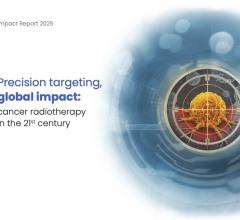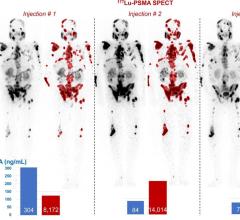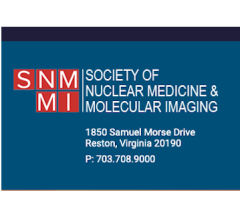June 17, 2013 — Accurate estimation of radiation absorbed dose in radioimmunotherapy (RIT) based on state-of-the-art 3-D imaging could lead to more personalized and effective treatments to improve non-Hodgkin lymphoma (NHL) patients’ chances of living longer without progression of their cancer, said researchers at the Society of Nuclear Medicine and Molecular Imaging’s 2013 Annual Meeting.
“Typically, advanced low-grade NHL patients who undergo conventional treatment such as chemotherapy and external radiotherapy eventually relapse and die of their disease,” said Yuni K. Dewaraja, Ph.D., associate professor in the division of nuclear medicine at the University of Michigan in Ann Arbor, Mich. “Improved tumor dosimetry calculations are an important first step in highly individualized planning for RIT, increasing the effectiveness of treatment and providing new options for a patient population in need.”
Determining the appropriate dose of RIT — an intravenous drug therapy combining a radioactive particle and antibodies that seek specific cancer cell signaling — has been an area of investigation for some time. Now researchers are exploring whether the radiation dose absorbed by the tumor — when it is determined accurately based on 3-D molecular imaging — can predict the patient’s response and length of response. This particular study focuses on the correlation between absorbed dose and outcome of RIT treatment with the radiopharmaceutical I-131 tositumomab.
“Therapy with radiolabeled monoclonal antibodies, such as I-131 tositumomab, ordinarily involves limiting the administered radioactivity to a conservative dose of total-body radiation, but a more aggressive dosimetry-driven approach can be used to tailor the treatment to deliver an optimal therapeutic dose to the tumor while avoiding critical organ toxicity,” said Dewaraja. “In addition to evaluating the response to I-131 RIT by tumor shrinkage and clinical response or non-response at follow-up, the present study examines progression-free survival, which is growing in use as the primary endpoint in oncology studies.”
Progression free survival is the length of time patients survive without their cancer worsening. The new method of dose calculation in this study is highly personalized and based on 3-D images using single photon emission computed tomography and computed tomography (SPECT/CT). In the study, data from patient imaging were fed through a specialized computer program called the Monte Carlo radiation transport algorithm to calculate the radiation dose absorbed by the tumor.
Researchers performed dose evaluations on a total of 39 patients who collectively had 130 tumors and applied their model of dose-response analysis. The key finding was that a much longer progression free survival was seen for those subjects who received a significantly higher radiation dose — more than 200 centigray, the standard measurement of ionizing radiation absorption. Those who received the greater dose had a median of 13.6 months without progression, whereas those who received less than 200 centigray had only about two months before their cancer progressed.
“This is the most important finding of the study, because the absorbed dose can be estimated from a diagnostic study performed prior to therapy, and future treatment protocols can be customized to deliver a dose exceeding 200 centigray to the tumor. This could potentially lead to marked improvements in overall patient survival,” said Dewaraja.
For more information: www.snmmi.org


 December 11, 2025
December 11, 2025 









